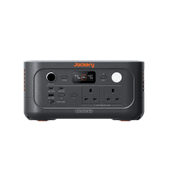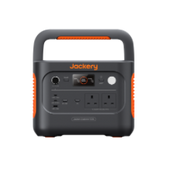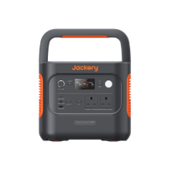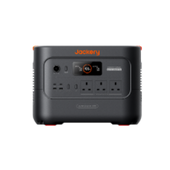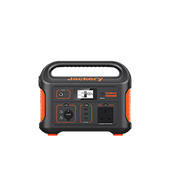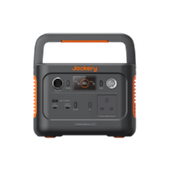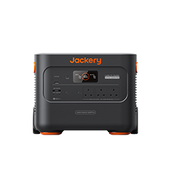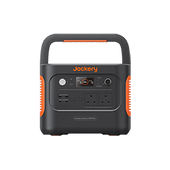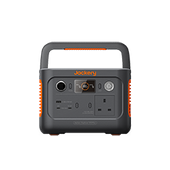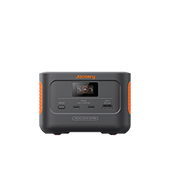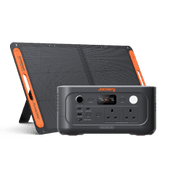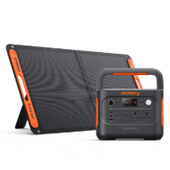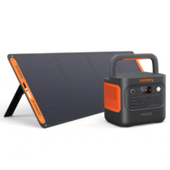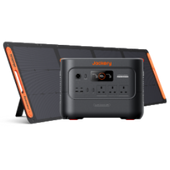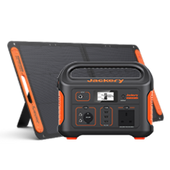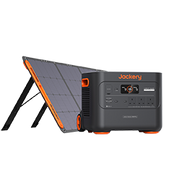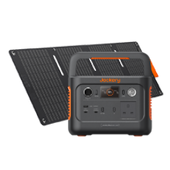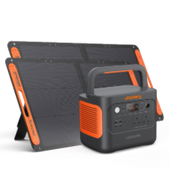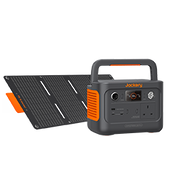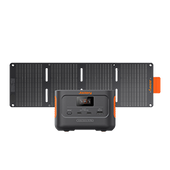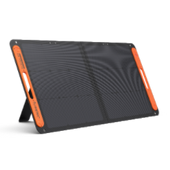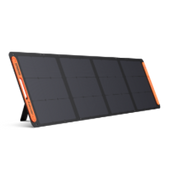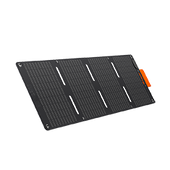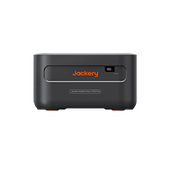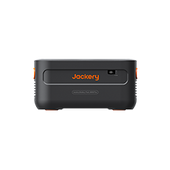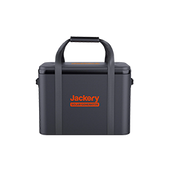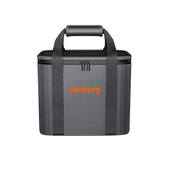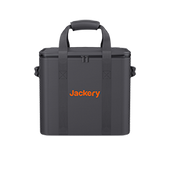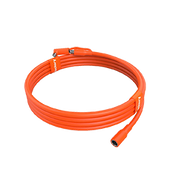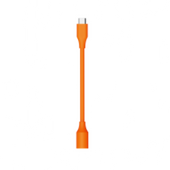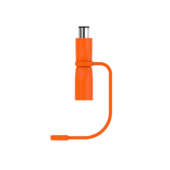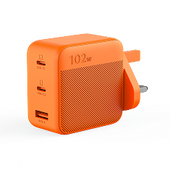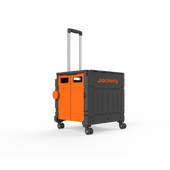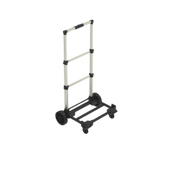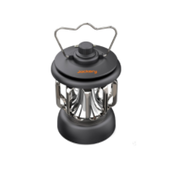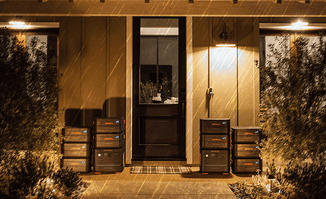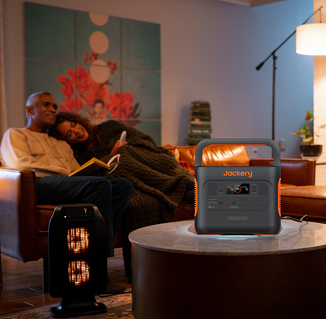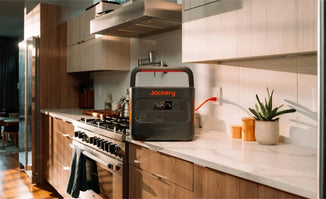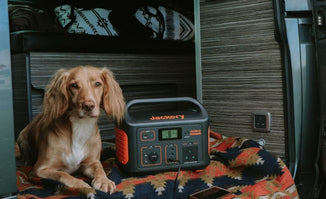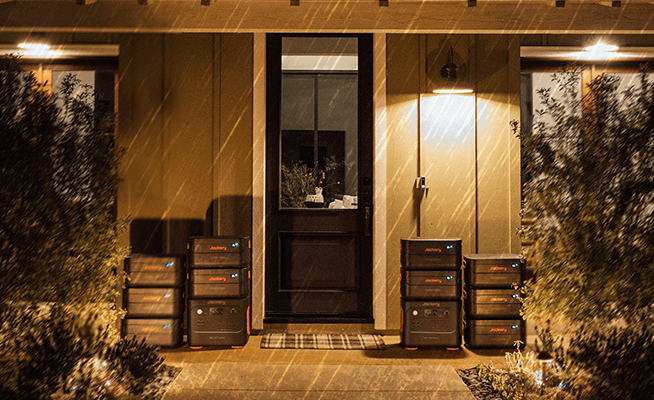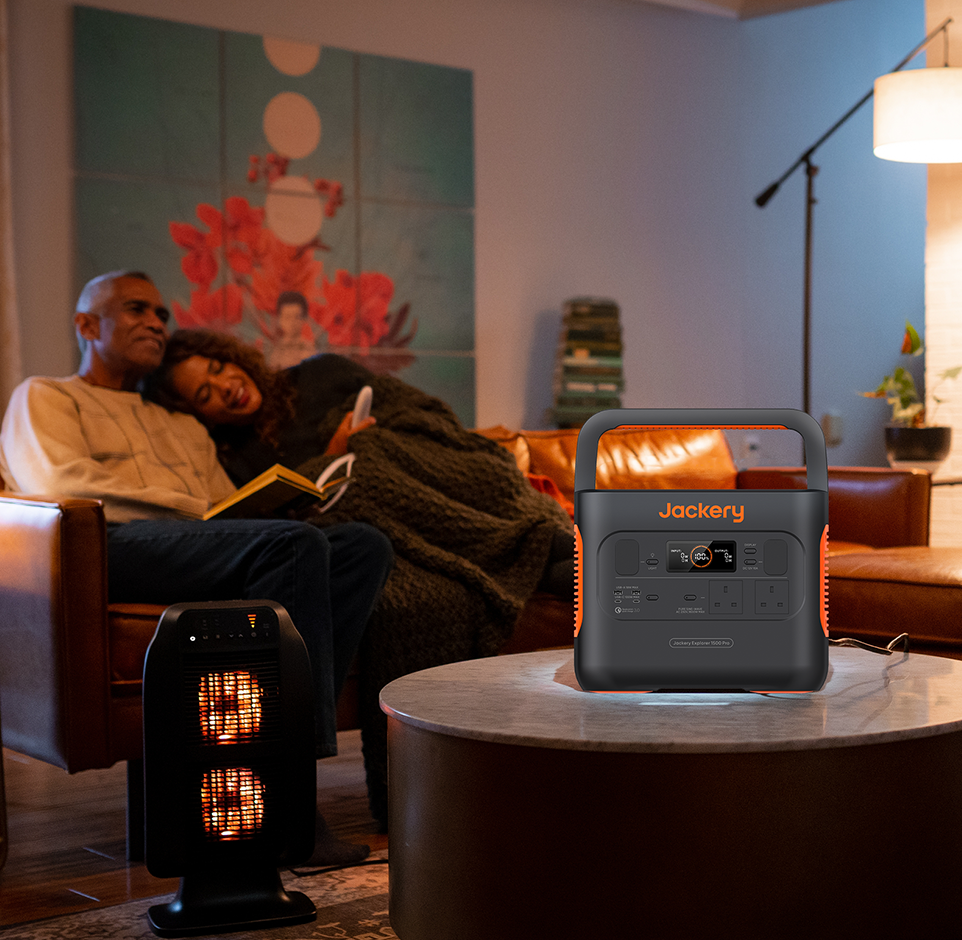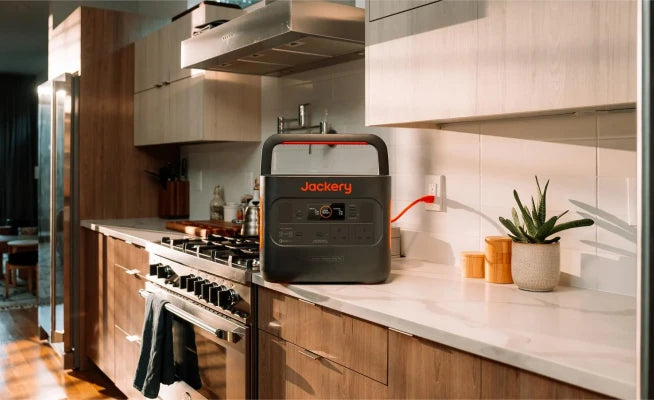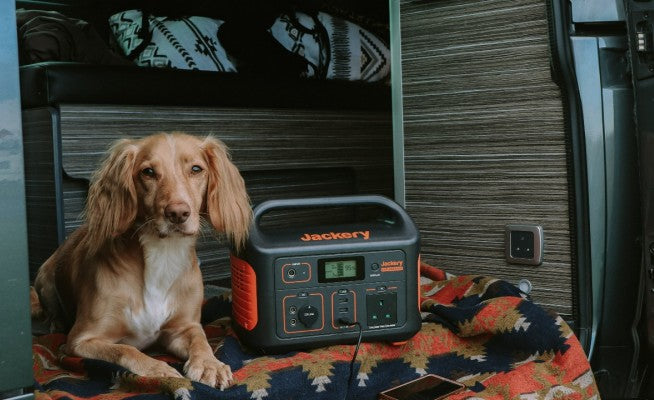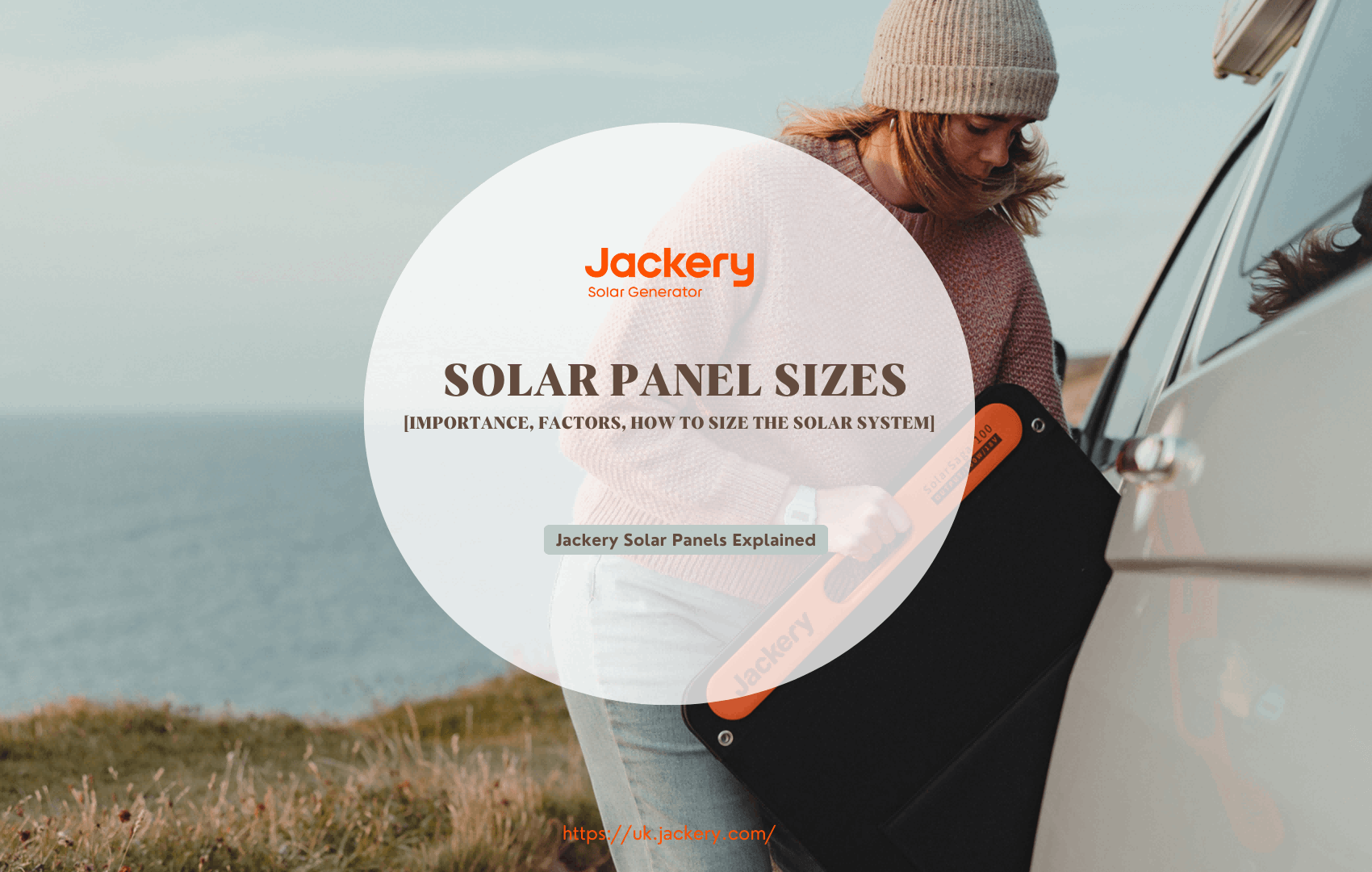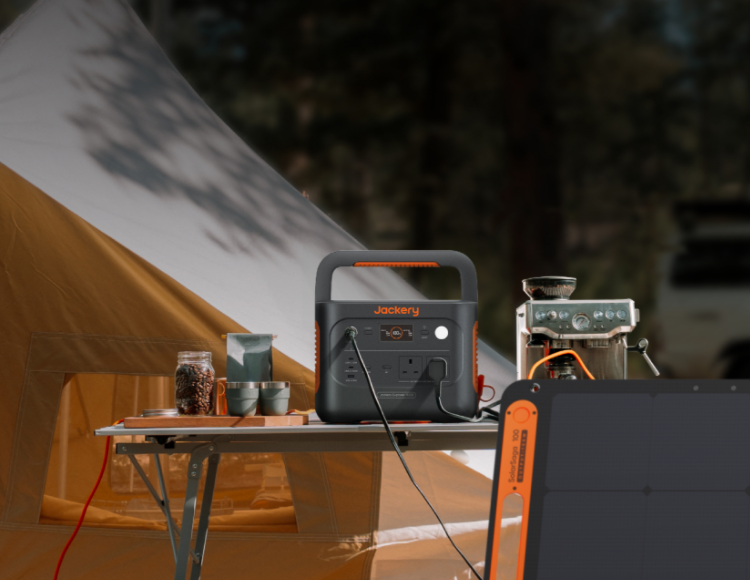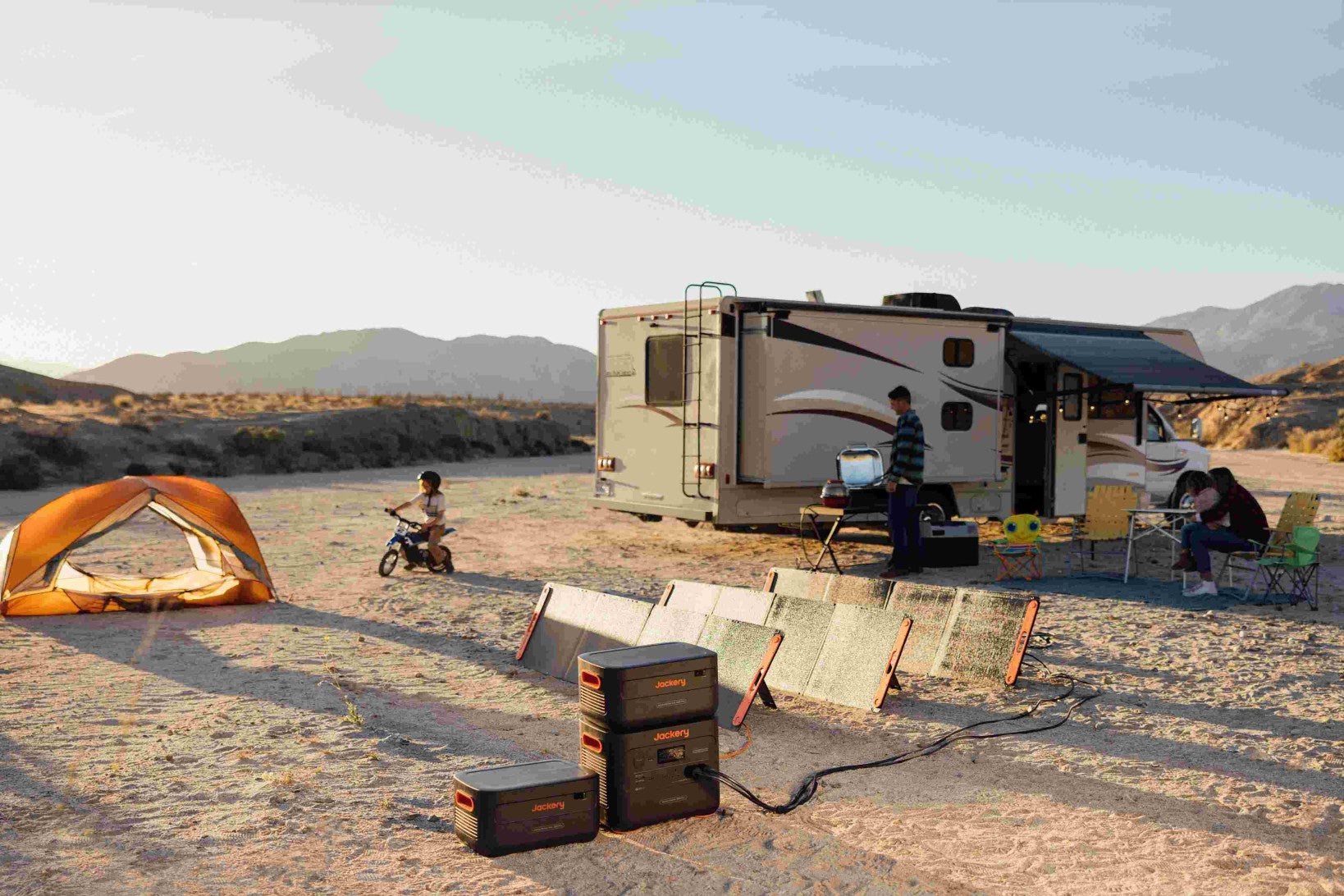When buying solar panels, it's essential to understand what they are about sizing. On the one hand, if the solar panel size is not chosen correctly, it may cause you to spend more than you should. On the other hand, selecting the incorrect solar panel size may result in you ending up with a solar system that is too small for your power needs.
Innovative developments in solar panels accelerate the number of solar systems installed across the UK. Are you planning to install solar panels but unsure what size to choose? The size of a solar panel generally includes physical size and wattage.
This page will show you everything about solar panel sizes in the UK, such as the household & commercial sizes, factors that affect sizes, and how many solar panels you need. Also, we highly recommend Jackery Solar Panels, which are portable, lightweight, and powerful and combine with Jackery Portable Power Stations to use solar energy fully.
|
Key Takeaways: |
|
When planning to install solar panels, the size of the solar panels is a factor to consider. In the UK, the physical dimensions of a domestic solar panel are typically around 189 x 100 x 3.99 cm (6.2 x 3.28 x 0.13 ft). In addition, the surface area of a solar panel is typically between 1.6 m2 and 2 m2 (17.22 to 21.53 ft2). In the UK, the size of domestic solar panels ranges from 250W to 450W. For commercial installations, the size of solar panels is usually between 400W and 600W. The size of a solar panel affects efficiency and power output. We highly recommend Jackery Solar Generator 2000 Plus and 1000 v2 (combo of Jackery Solar Panels with Portable Power Stations) for outdoor and indoor uses. |
Why Is Solar Panel Size So Important?
Does solar panel size Matter? When considering which solar panel to choose for your installation, the size of your solar panel is a factor to consider. Solar panels come in various sizes, and the size of your solar panel plays a significant role in the total energy output of your solar system. In other words, the size of your solar panel directly affects how much power it can generate.
If your solar panel system is too small for your home's energy needs, it will need more electricity. There are many ways to measure the size of your solar panel.
- Measuring Physical Size: Define the size of a solar panel in square feet or the roof area.
- Power Rating: Define the size of a solar panel in terms of power rating.
The power rating of a solar panel affects the amount of energy it can generate.
For example, a 300W solar panel is typically more extensive than a 200W solar panel and can generate more electricity than the latter.
So, just because a panel is physically larger doesn't mean it has a larger power rating. As solar technology has advanced, solar panels have become smaller, collecting more sunlight and providing more electricity. Your ultimate consideration should be whether solar panels make the most efficient use of roof space and are most cost-effective.
Solar Panels Sizes in The UK
Solar panels consist of solar cells, the squares observable on the panels. Cells turn light energy into electricity using the photovoltaic effect. The greater the number of solar cells in a solar panel, the higher its power generation capacity.
Traditionally, solar cell dimensions have been 156mm x 156mm; however, they have expanded in the past three to four years, leading to larger solar panel sizes.
Solar cells can be fabricated using monocrystalline silicon, polycrystalline silicon, and thin-film solar substrates. The outputs of polycrystalline and monocrystalline solar panels vary. Monocrystalline silicon solar panels are generally the most efficient, requiring less physical size to achieve high outputs.

When you hear the size of a solar panel, you think it refers to the physical dimensions of the panel (usually length, width and height).
However, solar panel dimensions generally include both physical size and wattage. Understanding the difference between a solar panel's physical size and wattage can help you understand questions such as "How big are solar panels in the UK?" and "How many solar panels do I need?"
Physical Solar Panel Sizes in The UK
In the UK, the physical dimensions of a domestic solar panel are typically around 189 x 100 x 3.99 cm (6.2 x 3.28 x 0.13 ft). In addition, the surface area of a solar panel is typically between 1.6 m2 and 2 m2 (17.22 to 21.53 ft2).
Commercial solar panels are typically around 195 x 99 x 3.81 cm (6.40 x 3.25 x 0.13 ft). However, in the UK, some large solar systems (3.5kWp) have solar panels with an average size of 1m x 2m (2 square meters).
However, the size (physical size) of solar panels manufactured by different manufacturers is generally different. Here are the solar panel sizes provided by some well-known solar panel manufacturers in the UK:
- Panasonic: 1722mm x 1133mm x 35mm
- SunPower: 1812mm x 1046mm x 40mm
- Tesla: 1890mm x 1000mm x 40mm
The application of solar panels has extended beyond rooftops and fixed structures. Various portable solar panels are available for camping, recreational vehicles, and emergency provisions. Portable solar panels for home applications are available for acquisition. Having one at home is advantageous.
Portable solar panels are inherently smaller than rooftop solar panels, as their designation suggests, due to their portability. Only tiny, foldable solar panels are optimal for transportation and portability, whether for camping, RVing, trekking, or off-grid life.
Portable solar panels, like Jackery Solar Panels, generally have dimensions of 552 mm in height and 610 mm in width when folded and measure 1220 x 552 x 20 mm when unfolded. Despite being smaller than rooftop solar panels, portable solar panels maintain consistent efficacy irrespective of their dimensions.

Wattage of Solar Panels in The UK
In the UK, the size of domestic solar panels ranges from 250W to 450W. For commercial installations, the size of solar panels is usually between 400W and 600W.
You should prioritise the wattage of the solar panel rather than the physical size. Because the wattage of the solar panel will determine how much electricity the solar system can generate.
However, it should be noted that when choosing a solar panel, available roof space may limit its physical size. So, if there is not enough roof space, select to install the solar panel to the ground.
So, in general, the physical size and wattage of the solar panel depend entirely on your needs.
Weight of Solar Panels in The UK
The weight of solar panels is substantial for many applications. The structural integrity of the roof or framework designated for solar system installation is paramount. The labour necessary for the transportation and installation of the panels on a roof must also be taken into account.
In the design of a solar energy system, it is crucial to account for the weight of solar panels, as it may jeopardise the roof's structural integrity. Assume your roof is incapable of supporting the weight of the solar panels. It may be necessary to reinforce it or identify alternate mounting solutions, such as portable solar panels. The weight of the solar panel will influence shipping and installation expenses.
The typical weight of solar panels in the UK is 18 to 21 kg for residential and 22 to 30 kg for commercial applications. This encompasses the weights of the frames and mounting apparatus. Contemporary roofing typically supports a rafter weight of 140 kilogrammes per square metre.
Factors Affect Solar Panel Sizes in The UK
As the demand for renewable energy continues to grow, more and more people are turning to solar panels as a clean, sustainable energy source. However, one of the most important considerations when choosing the right solar panel size is its physical size. Are there other factors to consider besides this?

Physical Size
Standard home solar panels typically measure about 65 x 39 inches. The physical size of a solar panel is directly related to the surface area exposed to sunlight and affects how powerful the panel is at converting sunlight into electricity. The larger the physical size of a solar panel, the higher its power production capacity.
Types of Solar Cells
Solar cells come in various types, including monocrystalline, polycrystalline, and thin film. Each type has different efficiency levels and physical properties, which can affect the panel size.
Monocrystalline solar panels offer power capacities of over 300 watts (W). Monocrystalline solar panels generally have a lower temperature coefficient, so they can maintain higher efficiency when it's hot outside.
Polycrystalline solar panels rarely exceed 17% efficiency and tend to be less powerful. They also tend to take up more space than monocrystalline panels.
Thin-film solar panels' efficiency varies depending on the specific materials used in the cell, but they tend to be around 11% efficient. In addition, thin-film solar panels break the mould of standardised sizes because they can be manufactured in any desired length.
Conversion Efficiency
Generally speaking, the conversion efficiency of mass-produced monocrystalline cells is about 23.5%-25%. The more efficient the panel, the smaller the surface area required to produce the same amount of electricity. Therefore, a high-efficiency panel can be smaller than a low-efficiency panel.
Does Solar Panel Size Impact Efficiency and Power Output?
Does the size of a solar panel impact efficiency and power output? The answer is yes. The size of a solar panel does affect efficiency. In other words, the efficiency of a solar panel depends on its power output.
A solar panel rated at 300W with a surface area of 1 square meter would have an efficiency rating of 30% ([0.3kW/1 square meters] × 100 = 30%).
A solar panel rated at 600W with a surface area of 1 square meter would have an efficiency rating of 60% ([0.6kW/1 square meters] × 100 = 60%).
Comparing the two examples above, we can see that the solar panels with the highest power relative to their size will be the most efficient. So why is solar panel efficiency so important? Solar panel efficiency is essential because higher efficiency reflects a higher quality solar product and means your system can produce more energy throughout the year.
In other words, the more electricity a home produces, the less dependent the house is on the national grid, which means lower electricity bills for you. Maximising your home's renewable energy production means taking advantage of the UK's solar panel subsidy, the Smart Export Guarantee (SEG).
How Many Solar Panels Do You Need?
The most common residential solar panel sizes are determined by the physical size of the solar panels, their wattage, and the number of them. So, to calculate the size of your solar panels, you first need to know some numbers to determine what size you need.

Step 1: Estimate Your Electricity Needs
Look at your most recent electricity bill to determine how much your home consumes daily. For example, using the UK average as a starting point, the average electricity consumption of a UK home in 2023 is 7.5kWh per day, or 7,500Wh.
|
Electricity Consumption |
House Size |
Average Daily Electricity Usage |
|
Low |
1-Bedroom (1-2 People) |
4.9 kWh Per Day |
|
Medium |
2-3 Bedrooms (2-3 People) |
7.9 kWh Per Day |
|
High |
4+ Bedrooms (4-5 People) |
11.8 kWh Per Day |
(Data Source: Aqua Switch)
Step 2: Consider Efficiency
It would help if you calculated how much of your electricity needs you want your solar system to meet. If you're on a tight budget, you might want a system that only covers 75% or even 50% of your electricity needs. But if you minimise your electricity bills, you'll want to choose a solar panel array that can meet all of your home's electricity needs (i.e. 100%).
Step 3: Assess The Amount of Sunlight
Now, you need to determine how many hours of sunshine your home receives daily, depending on where you live in the UK. For now, we'll use the UK average for daily sunshine hours: 4.3. However, you should also include a correction factor of 0.75 to account for any variables that may affect the solar panels, such as shading.
Step 4: Solar Panel Wattage
As we all know, solar panels come in various wattages, such as 200 watts, 300 watts, and even 600 watts. Now, you have all the information to calculate how many solar panels you need for your home. Use the following formula to find the most appropriate solar panel wattage.
Solar Panel Power Output = Solar Panel Wattage x Sunshine Hours x Correction Factor
Now, let's assume your daily power demand is 7.5kWh.
The solar system efficiency is 100%.
The average daily sunshine hours are 4.3.
The correction factor is 0.75.
A 350-watt solar panel is selected.
Substituting this into the formula, we get 350W x 4.3h x 0.75 = 1,128 watt-hours.
How Many Solar Panels Needed = Power Demand / Power Output
Substituting this into the formula, we get 7,500/1,128=6.65. This family needs at least 7* 350W solar panels.
Step 5: Calculate The Space Required
Before choosing a solar panel based solely on its wattage, you also need to consider the size (i.e. physical dimensions) and quantity of solar panels to ensure that your roof has enough space to support a proper solar panel array.
Remember that a standard-sized 350W solar panel takes up 1.89 square meters of valuable roof space. Seven 350W solar panels would take up approximately 13.23 square meters of roof space.
Here are some typical figures for different levels of solar panel wattage to meet the average daily electricity consumption in the UK (7,500Wh as an example).
|
Solar Panel Wattage |
Daily Electricity Provided |
Panel Size (m²) |
Number of Solar Panels Required |
Roof space required (m²) |
|
250W |
806.25W |
1.37 |
10 |
13.7 |
|
350W |
1,128.75W |
1.89 |
7 |
13.23 |
|
450W |
1,451.25W |
2.17 |
6 |
13.02 |
|
500W |
1,612.5W |
2.55 |
5 |
12.75 |
The data in the above table are all estimated values, and there may be some differences in the actual data, so they are for reference only.
Jackery Solar Generators Explained
Folding handles on Jackery SolarSaga Solar Panels provide easy transportation anytime and anywhere. Thanks to their excellent efficiency, these solar panels turn more sunshine into helpful power than conventional solar panels. Jackery Solar Panels have better energy conversion rates than other panels, even if they are less expensive.
Jackery Solar Panels should be used entirely by combining solar panels with Jackery Portable Power Stations to store created electricity in a lithium-ion battery, keeping the charge of all your devices. That is why you need to have a Jackery Solar Generator.

Jackery Solar Generator is a dependable solar power solution for multiple purposes, including outdoor adventures, home backup, and professional work. Only the Jackery Solar Generator, which combines Explorer series power stations with Jackery Solar Panels, can maximise solar energy use instead of only Jackery Solar Panels.
Jackery Solar Generator 2000 Plus: SolarSaga 200W + Explorer 2000 Plus
The Jackery Solar Generator 2000 Plus is the combo of Explorer 2000 Plus portable power station with SolarSaga 200W solar panels. Jackery Solar Generator 2000 Plus is a breakthrough in expandable charging technology, which can support a typical household for weeks and satisfy all the power needs of outdoor activity or professional work.
Expanding capacity from 2 kWh to a fantastic 12 kWh - ideal for practically every use situation, including camping, off-grid living, emergencies, and more, a single Jackery Explorer 2000 Plus power station supports up to 5 add-on battery packs at a time. Expandable to 3000W, a 30% rated power boost above other 2 kWh solutions available on the market.
The Jackery SolarSaga 200W Solar Panel boasts a solar conversion rate of up to 25%, facilitating rapid adoption of eco-friendly energy solutions. The ETFE-laminated case prolongs its durability, and the suggested angle guarantees optimal sunlight absorption, rendering it an ideal power source.
It is portable, collapsable, and may be immediately connected to a power station for an optimal solar power system. Boasting a power output of 200W, it delivers the most rapid solar charging experience in Jackery's existing solar panel collection.
The following are some feature highlights of Jackery Solar Generator 2000 Plus (SolarSaga 200W + Explorer 2000 Plus):
- Expandable Capacity: Excellent expandable capacity from 2 kWh to 12 kWh to satisfy all your power needs.
- 25% Higher Energy Conversion Rate: The solar panel, composed of monocrystalline silicon solar cells, utilises multi-layered cell technology to harness energy from sunshine.
- ChargeShield Technology: The innovative variable-speed charging algorithm enhances battery longevity by 50% with quick charge technology.
- Longer Lifespan: Equipped with LiFePO4 battery to have an extended lifespan of 10 years.

Jackery Solar Generator 1000 v2: SolarSaga 100W + Explorer 1000 v2
Jackery Solar Generator 1000 v2 is the smallest and lightest 1 kWh solar generator, which pair Explorer 1000 v2 portable power station with SolarSaga 100W solar panels.
The Explorer 1000 v2 portable power station provides a phenomenal 1500W output, 50% more than prior editions, to efficiently run high-demand needs, including refrigerators, portable air conditioners, ovens, etc. With USB-A/C connections and up to 100W dual PD charging, it can charge several devices (phone, laptop) concurrently, therefore serving as the best friend for all your power requirements.
Enabled using the app, the Emergency Charge Mode lets the Explorer 1000 v2 Portable Power Station be wholly charged in less than an hour, providing vital power backup when your battery runs low.
The Jackery SolarSaga 100W Solar Panel boasts a solar conversion rate of up to 25%; it is optimally designed for outdoor use and unforeseen power interruptions. The solar panel weighs about 8 lbs, is lightweight, foldable, and equipped with a convenient carry handle, enhancing its portability. The SolarSaga 100W has two kickstands that may be securely positioned on any surface.
The following are some feature highlights of Jackery Solar Generator 1000 v2 (SolarSaga 100W + Explorer 1000 v2):
- Emergency Super Charging: Up to 7 times faster², achieving a full charge in as little as 1 hour.
- ChargeShield 2.0™ Battery Technology: Numerous dependable certifications, 62 layers of safeguarding.
- 25% High Energy Conversion: The advanced solar cells with multi-layer tech deliver up to 25% more efficiency than standard panels.
- Next-Gen Bifacial Portable Solar Panel 100W: Proprietary Shock-Resistant Technology, 30% Lighter than industry standards, zero shading, provides enhanced power for outdoor survival.

Future Trends in Solar Panel Sizes
With the expected growth in the solar technology market and further technological innovation, we expect solar panels to be thinner, sleeker and more efficient. But, smaller and lighter solar panels will provide better performance figures over time, allowing for smaller and more efficient installations.
Various innovative technologies, such as hybrid solar panels, are impacting the size and efficiency of solar panels. Hybrid solar panels comprise two or more materials to improve overall performance, including increasing efficiency. Additionally, biohybrid solar cells combine organic and inorganic substances that can achieve 100% energy efficiency.
Depending on how solar panels develop in the future, new developments and innovations have great potential to reshape the UK solar industry. If technological advances can increase the efficiency of solar energy and reduce its cost, more homes and businesses in the UK will have a greater incentive to choose to install solar power.
Advanced solar technologies such as hybrid solar panels and even biohybrid solar cells could accelerate the number of solar energy systems installed across the UK.
Solar Panels Sizes in The UK FAQs
The following are the frequently asked questions about the solar panels sizes in the UK:
- How long does it take for solar panels to pay for themselves?
Solar panels typically pay for themselves in the UK in 7 to 15 years. However, the exact time depends on factors such as the initial installation cost, your electricity usage, and the amount of electricity you sell back to the grid.
- Are government grants available to help homeowners install solar panels in the UK?
The UK government does not offer direct grants to most homeowners to install solar panels. However, the Smart Export Guarantee (SEG) scheme allows solar panel owners to offset the cost of solar panels by selling excess electricity back to the grid.
- Can You combine different-sized solar panels?
While it is true that you can combine different-sized solar panels in a solar system, it is not recommended. Mixing different-sized solar panels will cause the weaker solar panels to limit the output of the more robust solar panels, which will decrease the efficiency of the entire solar system. If you must use different-sized solar panels, ensure they are connected in parallel rather than in series to prevent voltage and current imbalances.
- Do solar panels require maintenance? How much does it cost?
Generally speaking, solar panels only require regular cleaning and occasional professional checks to ensure all components function correctly. Maintenance of solar panels typically costs around £100-150 per year.
Final Thoughts
Solar panels offer a sustainable solution by converting sunlight into clean, renewable electricity. One of the most important things to consider when buying solar panels for your home is the specific size and specifications of the solar panels. You must know which solar panel sizes and wattage are suitable for you. Otherwise, you may end up with a system that is not suited to your needs, either too big or too weak to provide enough electricity for your home.

